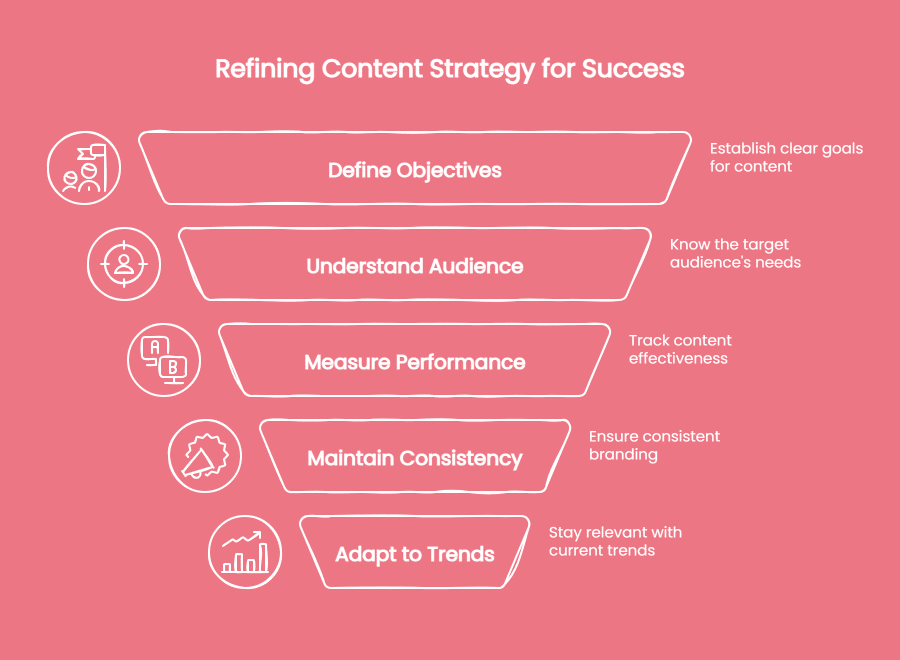TL;DR: Website redesign mistakes can cost Australian businesses thousands in lost traffic and revenue. This guide outlines 15 of the most common pitfalls, from poor planning and SEO missteps to compliance and usability issues, and provides practical checklists and strategies to avoid them.
Picture this: You’ve just invested $30,000 in a website redesign, only to watch your traffic plummet by 40% and conversions drop by half.
Unfortunately, studies show that a majority of Australian SMEs run into major issues during website redesigns. Here’s the thing:
Most website redesign failures are entirely preventable. Whether you’re managing a Brisbane e-commerce site or running a Melbourne professional services firm, understanding these critical mistakes before your next redesign can save you thousands in lost revenue and remediation costs.
Why Website Redesigns Fail: The Australian Context
Australian businesses face distinct challenges that international redesign guides often overlook. With 91% of Australians accessing the internet daily and mobile usage surpassing desktop, your redesign must cater to sophisticated, mobile-first users.
But here’s what makes it tricky:
The Australian market demands faster load times than global averages—53% of mobile users abandon sites that take over 3 seconds to load. Combined with our unique regulatory environment and competitive digital marketplace, the margin for error is razor-thin.
Pre-Redesign Planning Mistakes
1. Starting Without Clear Objectives
What exactly are you trying to achieve with your redesign?
Too many Australian businesses jump in chasing trends rather than setting clear goals. Without measurable targets—like increasing conversions by 25% or reducing bounce rates below 40%—the project is essentially flying blind.
The better approach is to document specific objectives before touching any design elements. Tracking KPIs such as conversion rates, average session duration, and revenue per visitor keeps the redesign focused on business outcomes, not just aesthetics.
2. Skipping User Research and Analytics Review
Think you know what your customers want?
The data might surprise you. Every dollar invested in UX research returns around $100 in value—yet many Australian SMEs still overlook this step.
Reviewing analytics from the past 12 months highlights which pages drive traffic and conversions, how users move through the site, and where they drop off. Adding customer surveys or heat-mapping tools like Hotjar and Crazy Egg gives further insight into how people actually interact with the site. Without this evidence, redesign decisions become guesswork.
3. Ignoring Current SEO Performance
Want to lose half your organic traffic overnight?
That’s what happens when existing rankings, backlinks, and high-performing content aren’t accounted for in a redesign. Businesses that skip this step often see hard-earned visibility collapse after launch.
A thorough SEO audit highlights which pages bring in the most traffic and revenue. Tools like SEMrush or Ahrefs can help identify rankings and backlinks, while a 301 redirect plan ensures valuable pages keep their search equity. Preserving these assets is just as important as creating the new design..
4. Unrealistic Budget Expectations in AUD
How much should a redesign actually cost?
In Australia, SME projects usually fall between $15,000 and $75,000, with enterprise builds reaching well over $150,000. Costs cover more than just web design and development—they include discovery, strategy, SEO, content migration, testing, and post-launch optimisation.
Breaking the budget into these categories makes it easier to see where the investment goes and to avoid cutting corners that could cost more later. Planning for both upfront work and ongoing optimisation ensures the redesign continues to deliver value after launch.
Design and User Experience Mistakes
5. Prioritising Aesthetics Over Functionality
Pretty doesn’t always convert.
The most common mistake? Creating visually stunning websites that frustrate users and tank conversions. Stanford research shows 75% of users judge credibility based on design—but functionality determines whether they stay.
The better balance is to focus on user tasks first, aesthetics second. Every design element should serve a purpose, whether guiding users toward conversion points or simplifying navigation. Australian users particularly value speed and efficiency over elaborate animations.
6. Poor Navigation and Information Architecture
Can users find what they need in three clicks or less?
If not, you’re losing customers. Poor information architecture—the backbone of effective web design—causes potential sales losses when visitors can’t locate the information they need.
The fix is to craft clear, logical navigation. Validate category labels with user card-sorting tests, and keep a prominent search bar so people can quickly find what they’re after.
7. Neglecting Website Accessibility Standards
Is your redesign excluding 20% of Australians?
That’s how many live with disability. Failing to meet WCAG 2.1 Level AA standards isn’t just ethically questionable—it’s legally risky under the Disability Discrimination Act 1992.
Essential accessibility features include:
- Alt text for images
- Keyboard navigation support
- Sufficient colour contrast (4.5:1 minimum)
- Screen reader compatibility
- Captions for video content
8. Cluttered Layouts and Poor Visual Hierarchy
Where should users look first?
Without clear visual hierarchy—a fundamental design principle—users feel overwhelmed and leave. Eye-tracking studies reveal users scan in F-patterns, making top-left placement crucial for key messages.
The best approach is to create breathing room. Use whitespace strategically to guide attention. Limit font variations to 2–3 maximum. Employ size, colour, and positioning to establish clear content relationships. Negative space isn’t wasted space—it’s a powerful design tool.
Technical Implementation Mistakes
9. Slow Page Loading Speeds
How patient are Australian users?
Not very. With Australia ranking 68th globally for internet speeds, optimisation becomes critical. Google’s Core Web Vitals now directly impact rankings, making speed a make-or-break factor.
To improve load times:
- Compress images (use WebP format)
- Minimise JavaScript and CSS
- Implement lazy loading
- Use content delivery networks (CDNs)
- Enable browser caching
10. Mobile Responsiveness Issues
What is the 3-second rule in website design?
Google finds that 53% of mobile visitors leave if a page takes longer than three seconds to load. With around 88% of Australians owning a smartphone, mobile-first, fast-loading design is now mandatory.
Responsive design means more than shrinking content to fit smaller screens. Touch targets need to be large enough to tap easily, forms must be thumb-friendly, and content should reflow naturally without horizontal scrolling.
11. Inadequate Testing Across Devices and Browsers
Works perfectly in Chrome on your MacBook?
That’s great—but what about Safari on iPhone, Firefox on Windows, or Edge on Samsung tablets? Functionality issues often appear on untested browser–device combinations, creating frustrations that could easily have been avoided.
Systematic testing should cover:
- Top 5 browsers (Chrome, Safari, Firefox, Edge, Samsung Internet)
- iOS and Android devices
- Desktop, tablet, and mobile viewports
- Different connection speeds (3G, 4G, 5G, NBN)
Content Strategy Mistakes

12. Vague Messaging and Unclear Value Propositions
What makes your business different?
If visitors can’t answer this within a few seconds, the messaging isn’t strong enough. Clear value propositions should explain the benefit to the customer, not just list features. Social proof—such as testimonials or client logos—helps reinforce trust and credibility.
13. Weak or Missing Calls-to-Action
What should visitors do next?
Even the best content won’t convert without clear calls-to-action. Effective CTAs should include:
- Action-oriented language (“Get a Quote”, “Book Now”)
- Visible buttons with contrasting colours
- Placement above the fold
- Multiple conversion paths
- Variations tested for effectiveness
14. Poor Content Organisation and Structure
Can users quickly scan and understand your content?
Most people skim rather than read word for word, so content needs to be structured for quick understanding. Headings, short paragraphs, bullet points, and bold highlights help people pick up the key information at a glance. Supporting visuals like images or infographics can also make complex information easier to absorb.
Launch and Post-Launch Mistake
15. Weak QA and Ongoing Management
Ready to go live?
A site launch isn’t the end—it’s the beginning. Without proper testing and ongoing management, even the best-designed site can quickly run into problems. Issues like broken forms, unoptimised content, or untrained staff can undermine the whole project.
To avoid that, focus on:
- Comprehensive QA testing before launch (forms, links, performance, security)
- Training staff to manage the CMS and content updates
- Creating style guides and templates for consistency
- Assigning clear ownership of site content
- Monitoring performance, errors, and user behaviour regularly
Australian-Specific Considerations
Beyond the common redesign mistakes, Australian businesses also need to factor in local requirements that directly affect performance and compliance.
Local Business Schema and Google My Business Integration
Implementing schema markup and keeping your Google Business Profile up to date helps improve local search visibility. Consistent details—name, address, phone number, business hours, and service areas—make it easier for customers to find and trust your business.
Australian Payment Gateway Integration
Redesigns often focus on design and usability, but payment systems can’t be overlooked. Customers expect local options such as PayPal, Afterpay, and Zip Pay alongside credit cards. For B2B, clear invoicing and GST display are essential. Ensuring your payment gateway integrates smoothly with Australian banks avoids costly checkout failures.
How to Avoid These Mistakes: Best Practices Checklist

Pre-Redesign Planning Checklist
- Audit current performance – Document SEO rankings, top pages, and conversion rates; save all high-performing content and traffic data from the past 12 months
- Research users and competitors – Survey 20+ customers, run usability tests with 5-7 users, and analyse what’s working on competitor sites
- Set clear objectives and budget – Define measurable goals (e.g., “increase conversions 30%”), allocate $15,000-$75,000 with 20% buffer, plan 12-16 weeks
Design and Development Checklist
- Design mobile-first with accessibility – Start at 360px width, meet WCAG 2.1 AA standards, use 44px touch targets and 4.5:1 contrast ratios
- Protect SEO during migration – Create 301 redirects for all URL changes, preserve meta data for ranking pages, implement schema markup
- Optimise for speed – Target 2-second loads using WebP images, minified code, lazy loading, and Australian CDN servers
Launch and Post-Launch Checklist
- Test everything – Verify forms, payments, and CTAs across all browsers/devices; confirm legal compliance; complete security scans
- Monitor launch closely – Track 404s and performance hourly for week one; train staff on CMS; prepare rollback plan
- Optimise continuously – Collect user feedback within 48 hours; review analytics weekly; schedule monthly improvement cycles
Making Your Redesign a Success
A website redesign is one of the biggest digital investments a business can make. Done right, it improves credibility, performance, and revenue. Done poorly, it can set a business back years.
The 15 mistakes in this guide show where things most often go wrong, but avoiding them is only part of the equation. Success comes from aligning design, technology, and strategy with the unique expectations of Australian customers.
With the right planning and support, a redesign becomes more than a cosmetic update—it becomes a growth engine for the business.




